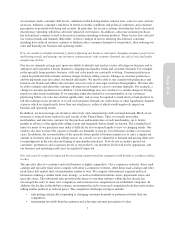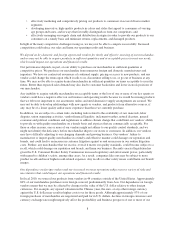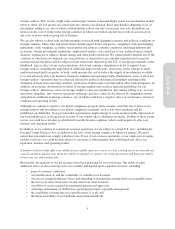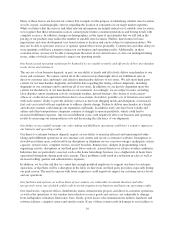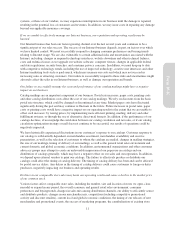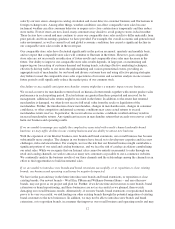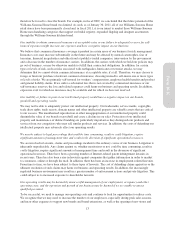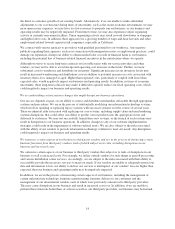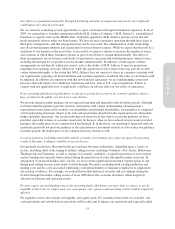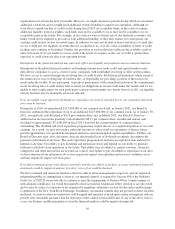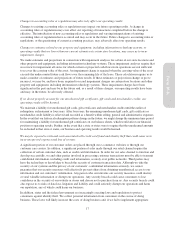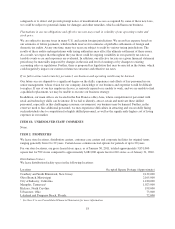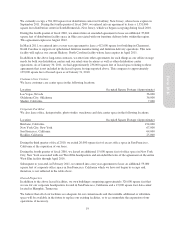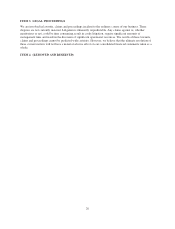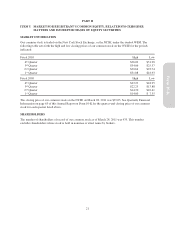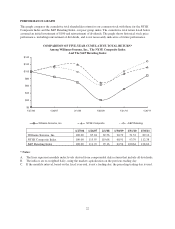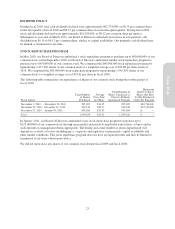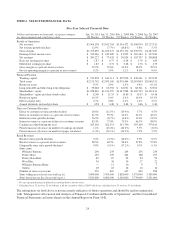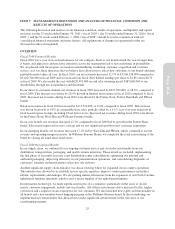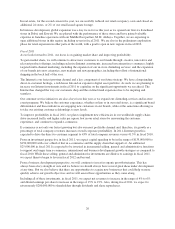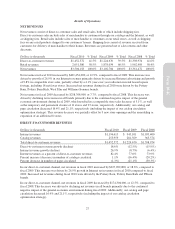Pottery Barn 2010 Annual Report Download - page 31
Download and view the complete annual report
Please find page 31 of the 2010 Pottery Barn annual report below. You can navigate through the pages in the report by either clicking on the pages listed below, or by using the keyword search tool below to find specific information within the annual report.
Changes to accounting rules or regulations may adversely affect our operating results.
Changes to existing accounting rules or regulations may impact our future operating results. A change in
accounting rules or regulations may even affect our reporting of transactions completed before the change is
effective. The introduction of new accounting rules or regulations and varying interpretations of existing
accounting rules or regulations have occurred and may occur in the future. Future changes to accounting rules or
regulations, or the questioning of current accounting practices, may adversely affect our operating results.
Changes to estimates related to our property and equipment, including information technology systems, or
operating results that are lower than our current estimates at certain store locations, may cause us to incur
impairment charges.
We make estimates and projections in connection with impairment analyses for certain of our store locations and
other property and equipment, including information technology systems. These impairment analyses require that
we review for impairment all stores for which current or projected cash flows from operations are not sufficient
to recover the carrying value of the asset. An impairment charge is required when the carrying value of the asset
exceeds the undiscounted future cash flows over the remaining life of the lease. These calculations require us to
make a number of estimates and projections of future results. If these estimates or projections change or prove
incorrect, we may be, and have been, required to record impairment charges on certain store locations and other
property and equipment, including information technology systems. These impairment charges have been
significant in the past and may be in the future and, as a result of these charges, our operating results have been
and may, in the future, be adversely affected.
If we do not properly account for our unredeemed gift certificates, gift cards and merchandise credits, our
operating results will be harmed.
We maintain a liability for unredeemed gift cards, gift certificates and merchandise credits until the earlier of
redemption, escheatment or four years. After four years, the remaining unredeemed gift cards, gift certificate or
merchandise credit liability is relieved and recorded as a benefit within selling, general and administrative expenses.
In the event that our historical redemption patterns change in the future, we might change the minimum time period
for maintaining a liability for unredeemed gift certificates on our balance sheets, which would affect our financial
position or operating results. Further, in the event that a state or states were to require that the unredeemed amounts
be escheated to that state or states, our business and operating results would be harmed.
We may be exposed to risks and costs associated with credit card fraud and identity theft that could cause us to
incur unexpected expenses and loss of revenue.
A significant portion of our customer orders are placed through our e-commerce websites or through our
customer care centers. In addition, a significant portion of sales made through our retail channel require the
collection of certain customer data, such as credit card information. In order for our sales channel to function and
develop successfully, we and other parties involved in processing customer transactions must be able to transmit
confidential information, including credit card information, securely over public networks. Third parties may
have the technology or knowledge to breach the security of customer transaction data. Although we take the
security of our systems and the privacy of our customers’ confidential information seriously, we cannot
guarantee that our security measures will effectively prevent others from obtaining unauthorized access to our
information and our customers’ information. Any person who circumvents our security measures could destroy
or steal valuable information or disrupt our operations. Any security breach could cause consumers to lose
confidence in the security of our website or stores and choose not to purchase from us. Any security breach could
also expose us to risks of data loss, litigation and liability and could seriously disrupt our operations and harm
our reputation, any of which could harm our business.
In addition, states and the federal government are increasingly enacting laws and regulations to protect
consumers against identity theft. We collect personal information from consumers in the course of doing
business. These laws will likely increase the costs of doing business and, if we fail to implement appropriate
17
Form 10-K


